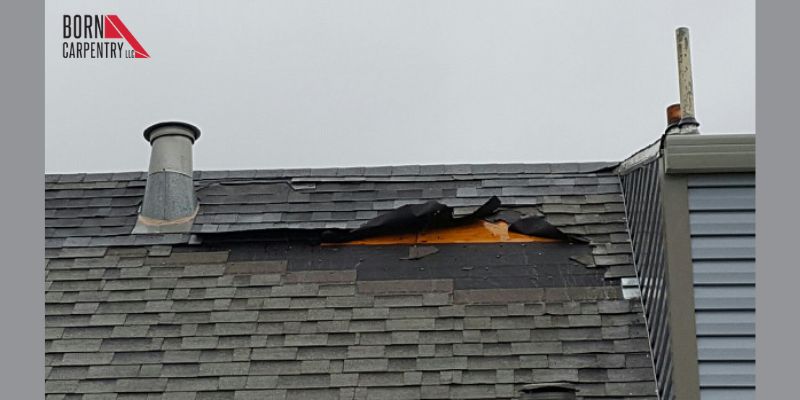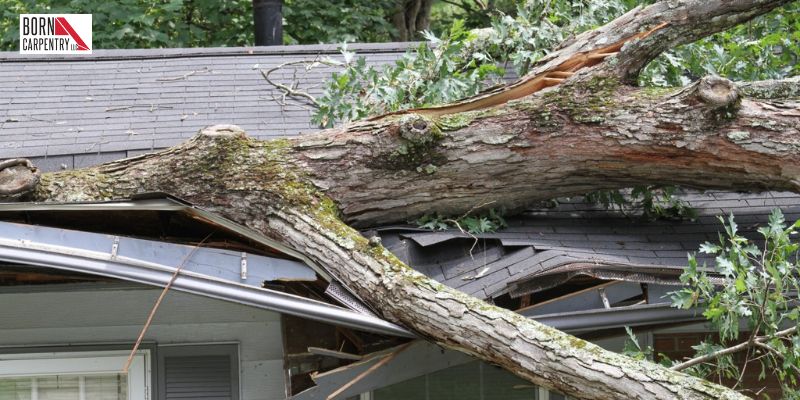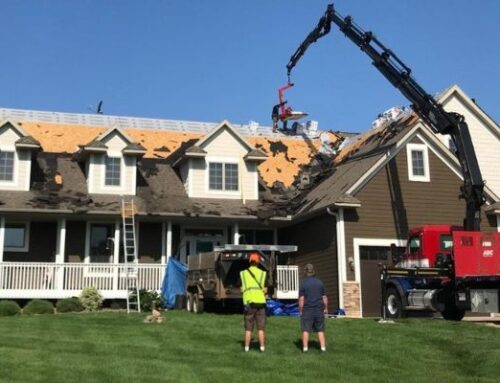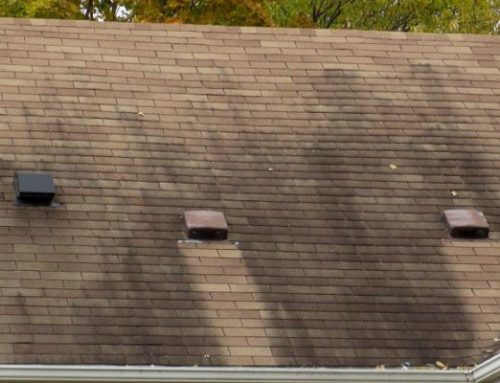Storms can take different forms depending on the climate in which you live. You can experience thunderstorms, hurricanes, or hailstorms. All weather conditions have the potential to damage your roof, despite your roof’s sturdy design. Roofs have manufacturing features that allow them to withstand harsh conditions… but storms can be devastating to roofs. The water, wind, and debris can cause damage to shingles, gutters, and roof underlayment.
A roof inspection after a storm does not just mean glancing over your roof and assuming that if everything looks okay there is no damage. Damages can be internal, and you need to watch out for the warning signs that indicate roof damage after a storm.
Here is a list of signs to look for that indicate your roof may have suffered damage. Taking immediate action can prevent further damage to your roof…
#1 Missing And Blown-Off Shingles:

With a storm comes high winds. If the velocity of the wind is more than 60 to 70 miles per hour, the shingles on a roof tend to get blown off. Sometimes you can observe peeling of the roof edges from the corners as well.
When shingles blow off, the underlayment gets exposed to harsh weather conditions. In addition, the water penetration inside the roof underlayment can rot the wood and cause a water leak inside the house. You can check for missing shingles from the ground. There is no need to climb the roof for this type of inspection.
#2 Damage Caused To The Shingles:
Shingles endure a lot of damage during a storm. Wind, water, and hailstones can eradicate granules from the roof’s surface. Shingles may have cracks, holes, blisters, and dents. These break down the overall efficiency and service life of the shingles. If a storm is bad, it can cause tearing, lifting, curling, and peeling of the shingles. These signs are not difficult to spot. You can inspect for them yourself and spot the roof damage.
#3 Damage Caused To Gutters, Flashing, Fascia, And Soffits:
Storm damage can devastate several other components of your roofing system– not just the shingles. Storms can break the gutters, chimney flashing, and soffits. Therefore, by design, these components of the roof are placed away from the home’s interior. The slightest bit of damage to any of the components of your roof can lead to water leakage inside the home. The debris from the storm may clog the gutter(s) and downspout(s). High winds and water can break the roof seal. The seal protects the roof’s edges and prevents water from entering the home. To inspect for these types of damages, you need to hire professional roofing contractors. They will assess the roof damage and provide you with a detailed report.
#4 Tree Damage From The Storm:

If your residential area experiences a severe storm, it may cause nearby tree branches to collapse onto roofs. The branches and natural debris cause dents in the shingles and break them. Additionally, tree branches have the capacity to break the roof underlayment. Simply put, your roof undergoes structural damage. You can observe the warning sign of this type of roof damage in the form of water leaks in your ceiling and walls.
#5 Damage Caused To The Attic Vents:
High-speed winds can infiltrate inside the attic and can cause damage to the vents and insulation of the house. Insulation is an essential part of the home that helps maintain interior temperature.
Summary:
Protecting your roof from storm damage is essential. You must take immediate action and call storm damage and roofing professionals if you experience any roof damage after a storm. They will assess the damages and restore the roof to its original form. The roofing and storm damage professionals at Born Carpentry will help you to resolve storm damage problems and improve the overall condition of your roof. Born Carpentry is in Andover, MN, and can be reached by calling 612-747-8003.






